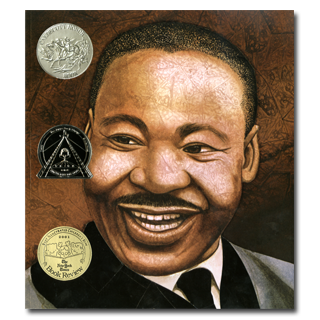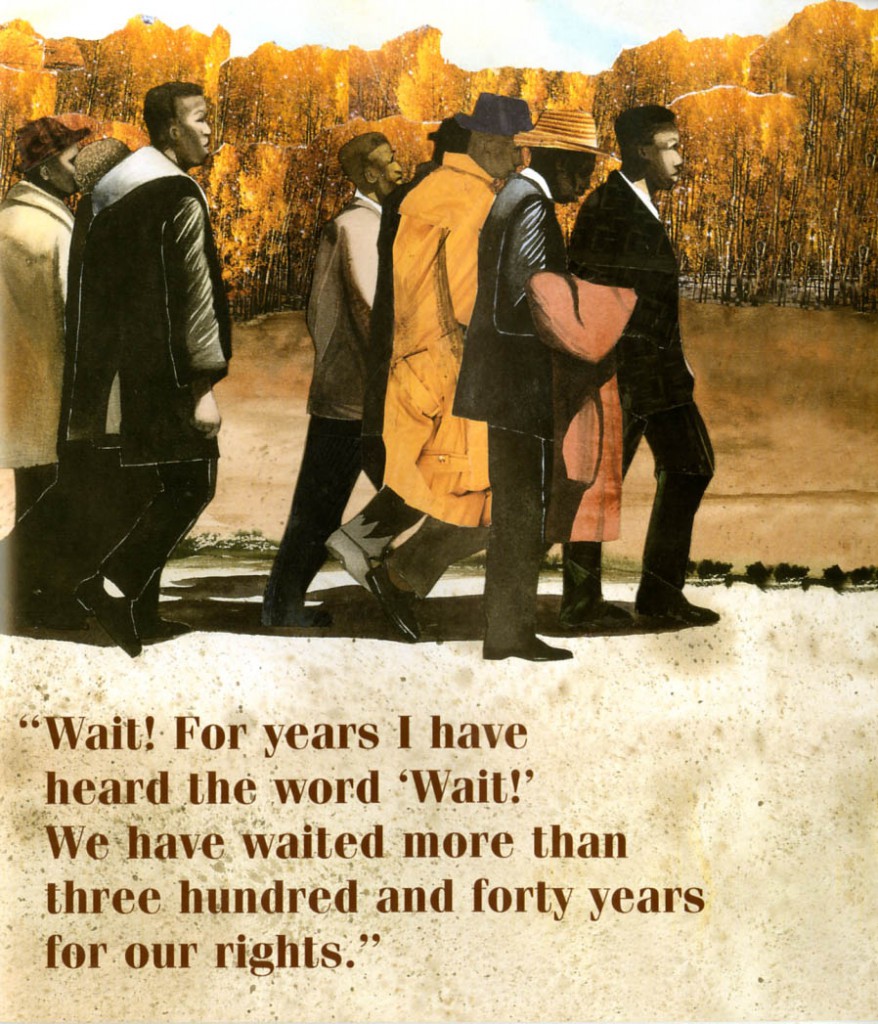
A FEW OTHER EVENTS FOR
JANUARY 17:
- Happy birthday Janet Stevens (Tops & Bottoms).
- Birthday greetings to First Lady Michelle Obama and heavy-weight boxing champion Muhammad Ali.
- It’s the birth date of John Bellairs (1938–1991), The House With a Clock in Its Walls, Robert Cormier (1925–2000) The Chocolate War, A.B. Frost (1851–1928) Stuff and Nonsense.
- Benjamin Franklin (1706–1790) and Al Capone (1899¬1947) were both born on this day. Read Ben and Me by Robert Lawson, and Al Capone Does My Shirts by Gennifer Choldenko.
- It’s Hunt for Happiness Week (Jan 17–23 this year) created by the Secret Society of Happy People. Read The Search for Delicious by Natalie Babbitt.
Today marks Martin Luther King Day. When we come to the third Monday in January, I am often reminded that I did not celebrate this holiday as a child. But I did have an opportunity to witness the incredible life and amazing accomplishments of Dr. King. When I was a student in rhetoric at Indiana University, I listened to his “I Have a Dream” speech hundreds of times. I still remember exactly what I was doing when I heard the news of his assassination.
For those who did not watch the unfolding drama of Dr. King’s life, how does an author convey his amazing charisma? How do you show the way one human being can become larger than life, and move into the conscience of those who watched him live? Particularly, how can you do this for young readers, ages four to ten, who want to know why we are celebrating Martin Luther King Day?
In 2001 veteran author Doreen Rappaport and then-novice illustrator Bryan Collier published Martin’s Big Words: The Life of Dr. Martin Luther King, Jr., one of the best picture books of the decade. Everything in this book was executed with care—all of it contributes to a feeling of the grandeur of the subject.
To begin with, there are no words on the front jacket. Bryan Collier has used all of the space for his warm, animated painting of Dr. King, larger than life, ready to come off the page. The endpapers, which look like stained-glass windows of a church, welcome readers into the story. As Bryan Collier wrote, “When I close my eyes and think about Dr. King’s life, the main image that comes to me over and over again is the stained-glass windows in a church.” The story, narrated only in double-page spreads, relates a few incidents from Dr. King’s life, but all seem vitally important. Collier uses collage to build each scene. Rappaport alternates between segments of King’s life and important phrases of his speeches. These phrases have been set in large type—again conveying the feeling that these words are indeed “big.”
The author seamlessly moves from King’s childhood, where he sees signs that say “White Only,” through his early professional years. The book presents the Montgomery Bus boycott, the Civil Rights Movement, and the awarding of the 1964 Nobel Peace Prize to Dr. King. Although, inevitably, the narrative takes readers to the day in Memphis, Tennessee, when Dr. King was shot, the last line proclaims: “His big words are alive for us today.”
Both author and illustrator have rendered a complex set of circumstances understandable for children. They convey the power and charisma of Dr. King. And they have introduced to young readers some of the words of one of our most eloquent leaders. Remarkable achievements for a forty-page picture book. An excellent set of materials for teaching the book can be found here.
On Martin Luther King Day I am so grateful not only for the life of Dr. King but also for this brilliantly executed book.
Here’s a page from Martin’s Big Words:
Originally posted January 17, 2011. Updated for .














Just found an email from Penny Markey that led my to your site-Congrats! As a former Children’s Librarian and now grandma, I look forward to sharing the world of literature with my grandson.
I love how both the man and the words are given such living presence in this book. Thank you, Anita. (Thank you, Doreen and Bryan!)
One of my all time favorites crafted by two incredible artists! Collier’s collages capture the spirit of Dr.King, certainly, but also reflect the realistic and complex social textures of the Civil Rights Movement. Rappaport’s text is pitch perfect.
You might be interested to know I use this book with my Grade five students every year as part of their study of democracy here in Australia. The illustrations and lyrical text are so moving. We also read Rosa (another Coretta Scott winner) and Going some place special. It is good to tell the students about the Coretta Scott King award too.